Start with a simple project when you’re teaching kids to hand sew! The step by step guide on how to do this with your own kids. There are many hand sewing projects for kids, this one is pretty easy for them to start with.
Last week I taught a three day Hand Sewing Camp to nine 6-10 year old girls (boys were invited too, but none signed up). Each class was two hours long and covered a different hand sewing skill: sewing buttons, cross stitching, and simple embroidery. I hosted it mainly for selfish reasons—hand sewing is great for kids on road trips and long airplane rides, both of which we have planned this summer and I wanted my daughter to learn.
Hand Sewing
Each class was carefully planned out so that the projects wouldn’t be too hard for the girls but would teach them enough that they would be able to go home and continue perfecting their skills. I provided all of the supplies (the girls each had to bring a pair of scissors from home).
The girls received a white bin (we decorated this the first day) to keep all of their projects/supplies in, as well as a compartmentalized container for their needle, embroidery thread, fabric marker, and buttons. Both containers were purchased at Dollar Tree.
If you aren’t interested in hosting a camp of your own, all of these ideas can be scaled down to teach just one or two kids as well. Hand sewing is such a great, practical skill for children to learn, it’s portable (think trips!), and is a fabulous boredom buster.
Supplies: For each girl, the supplies were $10-$12.
- 6″ wooden embroidery hoops purchased in bulk here. One per girl.
- Bucket of buttons that I divided up amongst the girls found here. I supplemented with a bag of green buttons from Hobby Lobby as well (found in the sewing section). I made sure all the girls had at least 25 or so buttons.
- Embroidery thread in bulk, also divided amongst the girls, here. Each girl ended up with about 8 different colors in their containers.
- Water and air soluble disappearing fabric marking pens here. One for each girl.
- Tapestry needles. One per girl. I purchased these at Hobby Lobby, but any sewing store will sell them. Similar to this.
- 1 yard of muslin, cut into squares (to fit into embroidery hoop). Can be found at any sewing store or even Walmart.
- 1/2 yard of red or pink gingham, cut into squares (to fit into embroidery hoop). Can be found at any sewing store or Walmart.
- 1 square of brown felt to make trunks for button trees. Also found at any sewing store, craft store, or Walmart.
- 1 yard of backing fabric for Button Tree pillows.
- 1 package of poly-fil for pillows like this
- Travel size tissue packages for each girl. I purchased these at Dollar Tree (8 for $1).
How to Sew By Hand
Day One: Hand Sewing Button Trees
- Decorate bins with permanent markers as girls come in. Label with names.
- Once all girls have arrived, go over supplies in compartmentalized container with lid. These are also labeled with names.
- Help girls thread needles and learn to tie a knot (I spent a lot of time tying knots for girls during these classes!).
- Introduce button sewing. Have each girl practice with a button from their container and no fabric. Going up through one hole and then back down through the other. Teach different ways to sew buttons with four holes.
- Hand out embroidery hoops with muslin and a machine stitched felt “trunk” attached.
- Show Button Tree made as an example. Let the girls start on their own Button Trees, emphasizing that they can create whatever kind of tree they want. No right or wrong.
- When the girls are done sewing on at least 8 buttons, have them pick out their pillow back fabric. Sew the pillows together, let the girls stuff them, and then (teacher) slip stitch them closed.
Day Two: Cross Stitching Hearts
- Work on creating a simple picture made of “Xs” on graph paper as the girls come in.
- Share pictures they have created and explain that they have made their own cross stitch patterns!
- Once all girls have arrived, show them the heart cross stitch pattern we will be using and the sample cross stitch I made. Demonstrate sewing an X in the gingham. Heart cross stitch pattern found here.
- Hand out embroidery hoops with red gingham. I love using gingham for this because the kids get to make LARGE X’s for their first project.
- Remind the girls to start from underneath the embroidery hoops so their knot doesn’t show. Mark all of the girls’ fabric to show them where to start with their cross stitch.
- Start cross stitching!
- I had heavy cardboard cut to 4×6 size and spray adhesive so they could frame these when they finished, but none of the girls finished their cross stitches completely, so I just sent the cardboard home with them.
Day Three: Embroidered Tissue Holders
- Work on cross stitches from yesterday as the girls come in.
- Once all girls arrive, hand out felt pieces and show example tissue holder with the slit for the tissues on one side and then a simple embroidery on the back. For the tissue holder, I followed the basic instructions found in this Martha Stewart tutorial, but cut the pieces 5.5″ x 7″ instead of the measurements given in the tutorial.
- Because these were young girls, I didn’t teach them a chain stitch or satin stitch, just a very basic running stitch. Up, down, up, down. Their stitches were definitely messy, but it’s a skill that takes some work.
- The girls folded their tissue holders so the short ends met in the middle and then marked the top and bottom of that area with their fabric marker.
- Then they drew a simple letter or drawing in the space between the marked lines (on the back of the tissue holder). After getting their drawing done, they embroidered their drawing/letter.
- After finishing their embroidery, they finished sewing up the sides of the tissue holder and put small packages of pocket tissues inside. Many of them were excited to go home and make more of these as gifts!
- Once they were finished, I gave them free sewing time. They had access to a bucket of buttons and some more muslin and came up with a lot of cute projects.
Hand Sewing Camp was such a great experience and tons of fun! I encourage any parent who has been thinking about doing something like this to go for it! If you feel like you aren’t talented enough, remember that kids will have no idea whether you are an expert or not.
Last summer I held Art Camp at my home. If you want to read more about the projects and lesson plans I created for that, head over to Vermillion Rules for the details!
Here are some more great hand sewing projects perfect for kids:


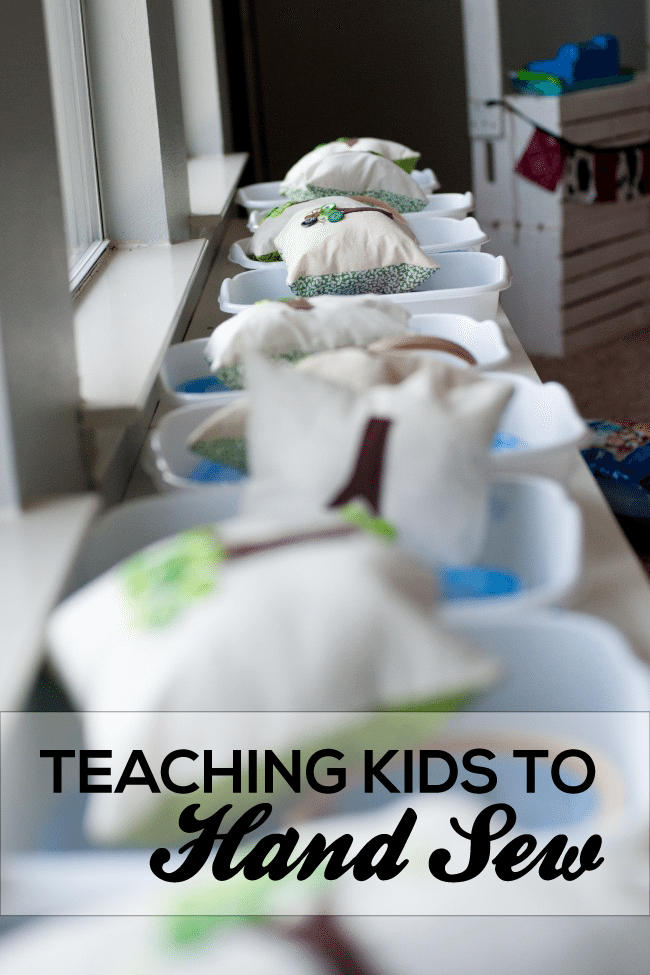
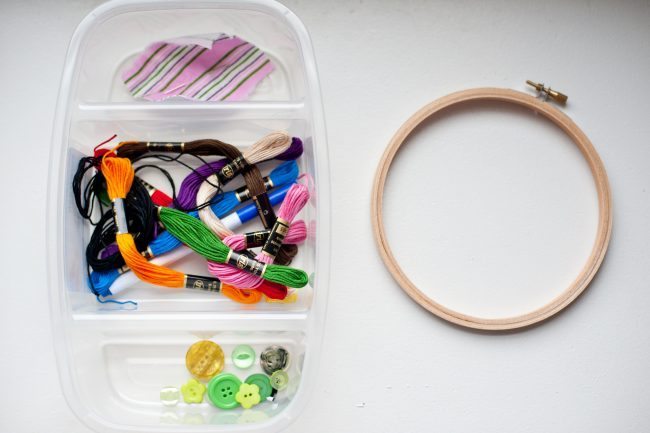

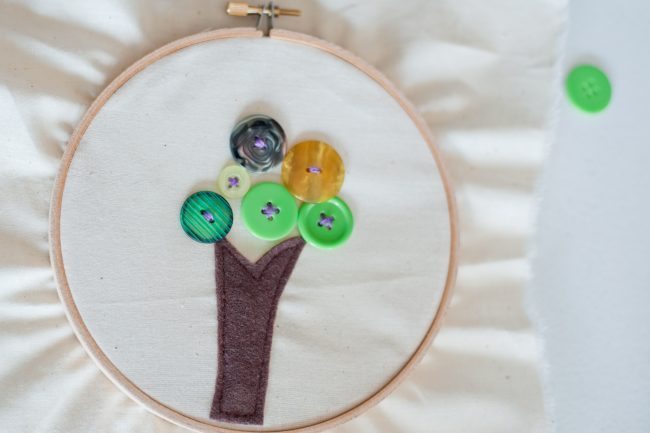
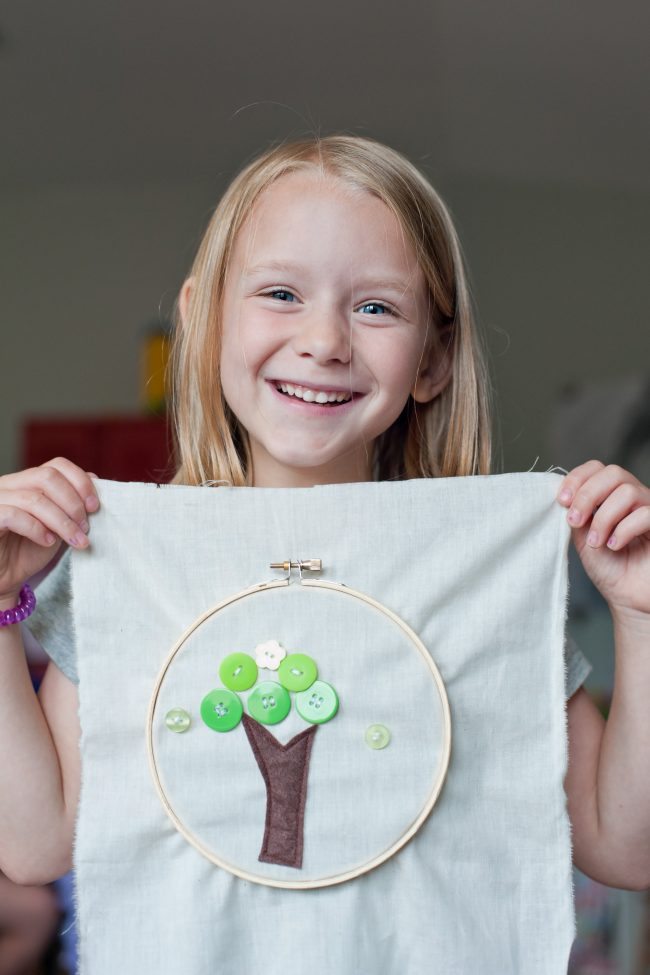
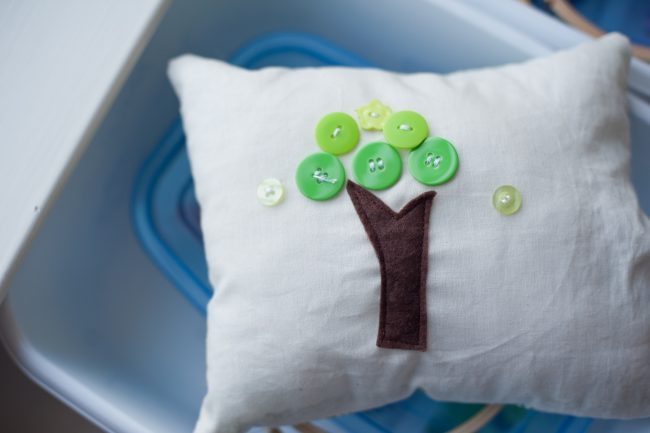
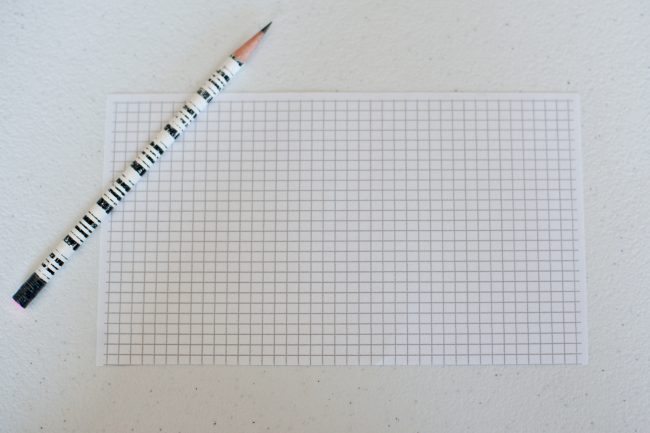
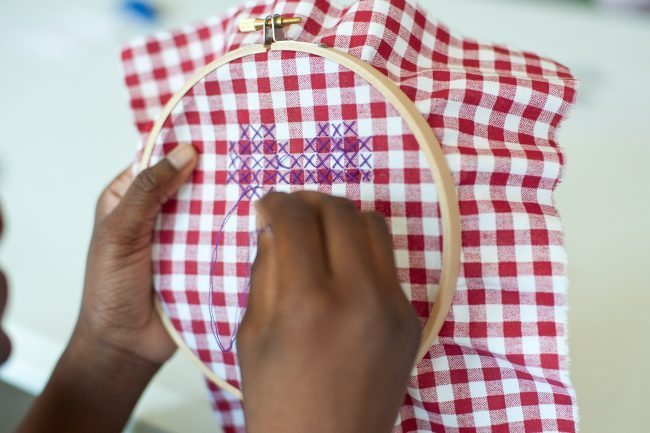

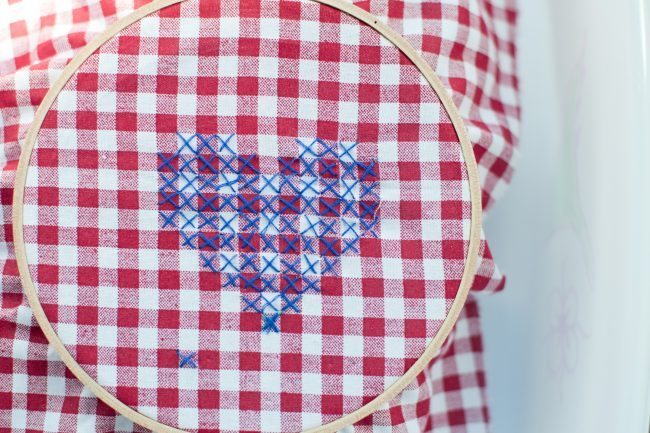
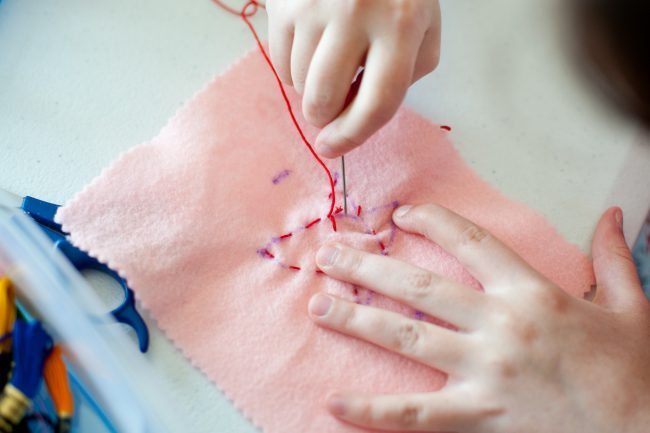
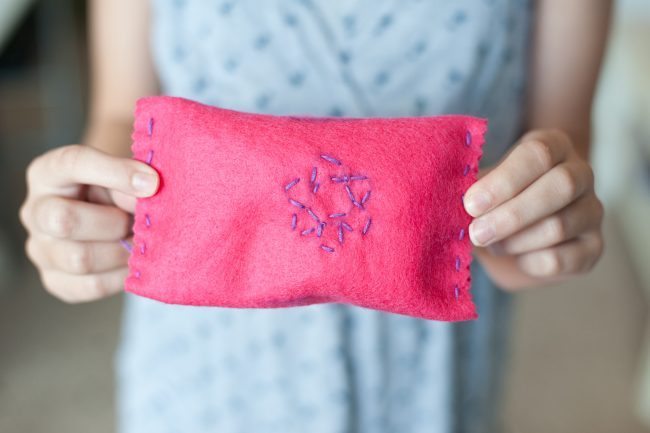
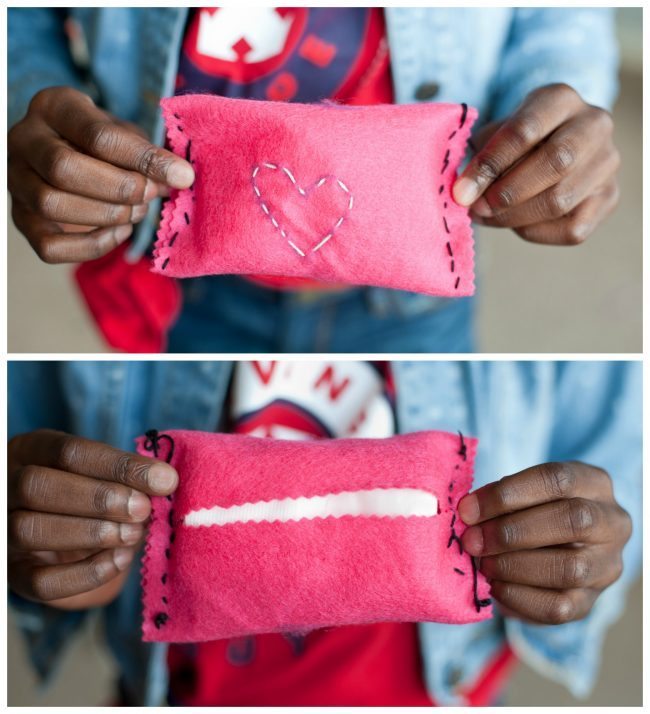
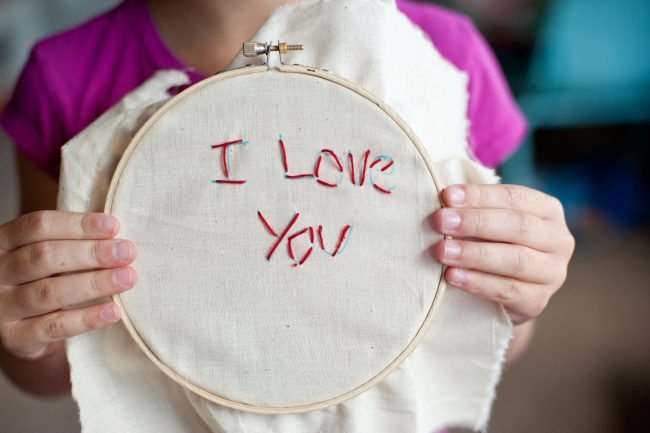
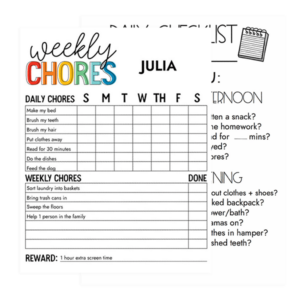

About how long did you plan for each session?
Each session was 2 hours. It ended up being the perfect amount of time.
I loved to do embroidery when I was a little girl. I hope to start up again. Perhaps this aricle will give me the insentive. Thank you for this great article!
Marilyn
I totally love this idea. I might learn too as I teach my niece and maybe my nephew this summer!! Good rainy day activities!
It would be great for you to teach your niece and nephew! Let me know how it goes!
i am truly impressed with the projects you chose and how the skills built upon each other. You clearly have a talent for both sewing and teaching.